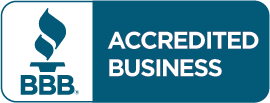How to Select the Right Hoist
Know the Needed Capacity
When settling on the ideal chain hoist for your production needs, you need to begin by knowing the heaviest load it will be expected to lift. The stated capacity on the hoist should at least meet that number and go no higher than the rated capacity of the structure it is suspended from. Somewhere between those two values is the sweet spot for safety and to ensure that your equipment does not wear out prematurely. The calculations can differ for electronic models––ask a trained Americrane and Hoist Corp technician for details.
A related but different category is duty class. These published standards are created based on lifts per hour during a set work period, average load weight, and a host of other criteria. Duty cycles range from H1-H5 and are important to know in order to ensure safety and durability.
Decide on Suspension and Clearance
Depending on the type of equipment you already have and the jobs you need an additional hoist to handle, you could be looking at fixed mounting or using a trolley. Beyond that decision, you’ll also need to know whether a trolley will be rigid or articulating, manual or motor-powered. Narrowing down these factors ensures that you find the best model that will integrate seamlessly with your existing setup.
Lift, reach, and headroom are three more parameters that are key to your decision. They all have to do with overhead space, but lift refers specifically to the distance that the hoist can lift its load, from fully lowered to fully raised. Reach indicates the position of the hook saddle in relation to the suspension system. And headroom is the space that the actual hook and suspension apparatus take up, which will be above the load when suspended. All of these figures taken together can give you insight into the type and style of hoist that will work best for your needs.
The Right Operation Type
Operation type has everything to do with the type of power that drives the hoist. This could vary from manual or electric to pneumatic. Other than your own preference or job requirements, cost, relative location of utilities, lifting speed, and operating environment are just a few of the factors to consider. Manual hoists tend to be more affordable overall, with reconditioned models being the least expensive. These will work well for intermittent use, lower capacities, and in areas where utilities are not easily accessed. Electric and pneumatic hoists will clearly be faster to lift loads, can handle more consistent use, and are less physically taxing on operators. Electric hoists are in the middle range of pricing, and relatively easy to install. They can also be outfitted with specifically-designed components to be safe for use in hazardous areas. Be sure to check that the power available in your facility is compatible with the hoist’s power requirements.
Choosing a Speed
It might seem obvious that a faster lift is better, but this is only true in certain situations, such as during long lifts or when many lifting and lowering cycles are necessary. Weight of the load, equipment specifications, and motor strength will help to determine the best speed for a given task. Somewhere between 8 and 32 FPM is an average range.
Along the same lines, choosing to work with the unit’s original power needs or to step down voltage can determine control types. This will ultimately affect speed control and whether you opt for variable speed drive (VFD) or adjustable frequency drive (AFD). Choosing a hoist that incorporates a hard-wired, wall-mounted, or wireless remote control pendant is another decision that will affect ease of use and convenience.
Identify Dimensional Boundaries
Clearly, you’ll need to know the overall clearance in an area where you’re hoping to use a hoist. Overhead and side clearance along with end approach are especially important to factor in. If clearances aren’t properly accounted for, you could find yourself in a potentially dangerous situation.
Know Your Environments
“Normal” operating conditions would not include extreme temperatures, prolonged outdoor exposure, corrosive environments, or otherwise hazardous situations. If your workspaces include these or other damaging environmental factors, the hoist you select needs to be rated to meet these challenges.
An Americrane and Hoist Corp technician can help you to determine the best hoist for your unique situation. Get in touch with our team to request a quote or to learn about a specific hoist.
Contact Us | Hoists | Hoist Parts | Cranes | Beam Clamps | Inspections & Training | About Us | Customer Reviews | Privacy Policy | Shipping & Returns
Americrane & Hoist Corporation | 13311 Enterprise Ave | Cleveland, Ohio 44135 | Phone: 216-267-9100 | Fax: 216-267-9131
All Rights Reserved 2025, Americrane & Hoist Corporation
Admin Login | Web Site Developed by Alt Media Studios







